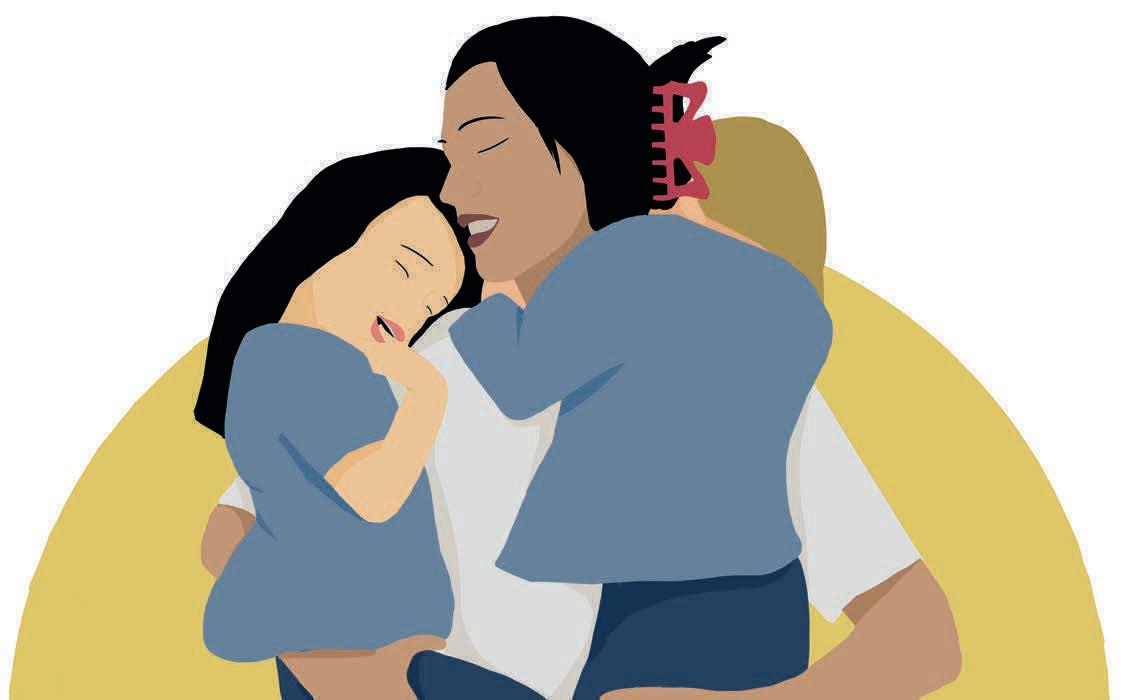gan to collaborate with private investors to invest in such areas considered “old” and “decaying” to “rejuvenate” them, so as to attract a new demographic with more affluent/profit-generating tastes. While this has brought about the cafes and shops that we so often frequent, it has also raised a series of uncomfortable but unignorable questions regarding clashes of class and culture. Take LEE TUNG AVENUE, for example. We’ve all seen our fair share of Instagram posts featuring the state-of-the-art lanterns that hang above the lane of big-shot brands occupying the ornate buildings reminiscent of colonial Hong Kong— our very own mini-Rodeo Drive, if you will. But before this came to be, not so long ago, it was once known as Wedding Card Street— home to a thriving community of local families and shops specializing in the printing business. This all flipped with the announcement of its demolition and redevelopment by the aforementioned Urban Renewal Authority in 2003, which was faced with large-scale uproar from its affected members who then pushed forth a proposal to keep the tenement buildings which served as homes for the members of the community; but this was ultimately rejected and the demolition of the whole street went on. While the URA did offer compensation for former owners of 40,000 HKD per square feet, this was only roughly 17% of the actual land worth following the redevelopment, which was at 230,000 HKD per square feet, further angering former community members. Businesses which relocated to other surrounding streets were reported to suffer according to the Apple Daily News, with many reluctantly deciding to close permanently following the demolishing of the street. But to the community in question, the issue was always more than just about business and money. While that was definitely a substantial aspect (the most, to some), many sought for the preservation of the area in regard to its socio-cultural and historic significance, arguing that the demolishing of the area would be destructive to the relationships and sense of community that had been carefully cultivated over a long period of time. For others, it represented a sort of “cultural erasure” by the government and private corporations, following the general trend of opinion on gentrification across the world. Claims of gentrification being code for class colonisation or dishonouring the cultural atmosphere of the area are not at all uncommon among the most negatively affected stakeholders and understandably so. However, this is not to say that the fundamental concept of gentrification is bad. Investing in disinvested and neglected areas is worth doing, but it is when gentrification is used to capitalize on the affected community without giving back to its
people in any way that it becomes a problem and it almost always does, as seen in all too many cities across the world. Now we see Wan Chai very much divided. There’s shiny Wan Chai and old Wan Chai, or rather gentrifying Wan Chai and not-yet gentrifying Wan Chai. The fancy Wan Chai and the kind of Wan Chai you might only see again in an old postcard or a scene from a Wong Kar-Wai movie. As we see more and more local businesses shutting down and locking up while new bakeries, cafes, boutiques and bars take their places overnight, one can only wonder how long it will be until all that’s left of old Wan Chai is inevitably succumbed to the lucrative profiteering by developers and the government. Further questions also arise: where will the displaced go when accessible housing is already so scarce in Hong Kong? What does uncontrolled gentrification mean for the future of Hong Kong, culturally? It seems that under the current status quo, the very streets with the flower markets, meat markets, neon signs and other quintessential Hong Kong icons we love to take photographs of and post on our Instagrams may very well go endangered in the decades to come— possibly sooner than we expect. But more importantly, the very people who we have to thank for these treasured things are being forced and kicked out of their longtime communities, many of whom have been there for generations— all while investors and developers make more money and the privileged have another place to spend their money in. So what can we do about it? Under this economy — not much. Solving the harmful effects of gentrification requires extensive systematic change, but in the meantime, we can spread the word and familiarize ourselves with this issue further. This piece only touches the very surface of gentrification and there are so many other facets to this issue worth knowing about. As international school students (as well as staff and parents) with predominantly welloff backgrounds who preach “international mindedness”, it is imperative that we check our privileges in regard to such local issues as so often do we form our actions and assumptions based on the ignorance that comes with status. So the next time you find yourself in Wan Chai or really anywhere for a quick bite, instead of flocking to a new trendy restaurant you could almost definitely find in any other city in the world, maybe consider a local place unique to Hong Kong instead and for a much more practical cost at that. Support the local businesses that help preserve the charm of this culture-rich city beyond the ever growing ritz and commercial pomp — while you still can.














